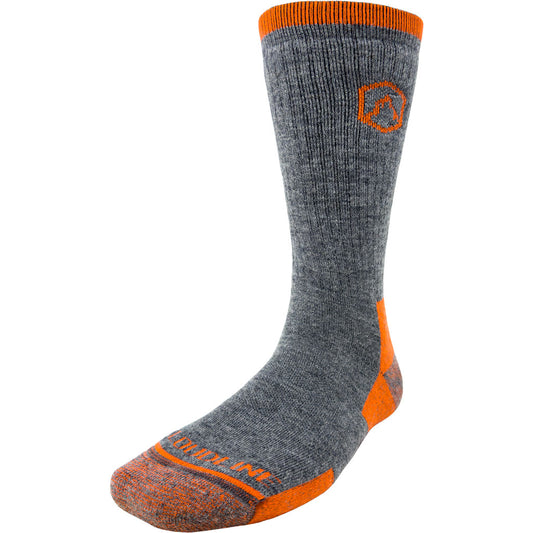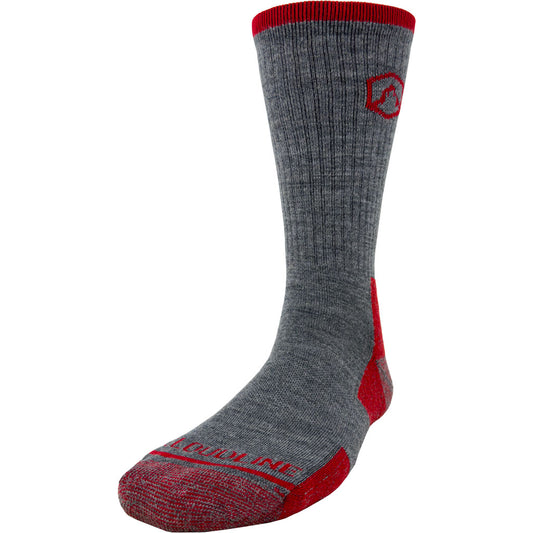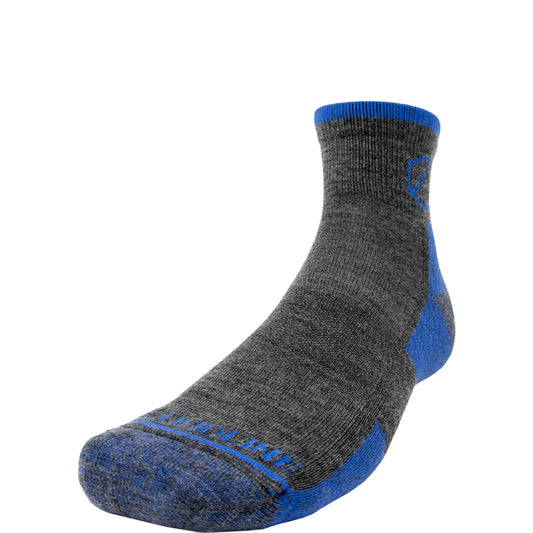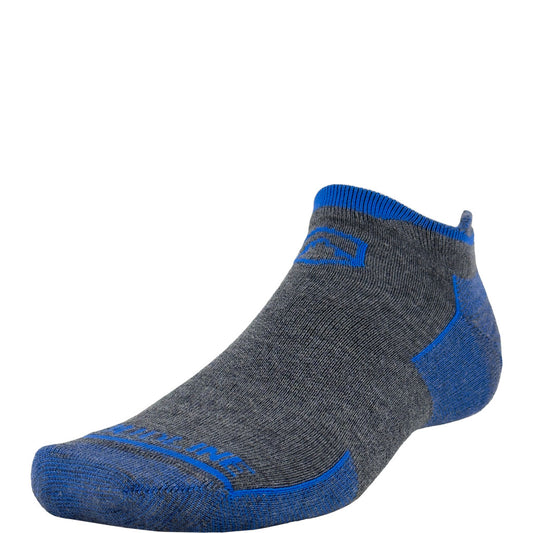
How to Pick the Perfect Campsite in Both the Frontcountry and Backcountry
With summer around the corner, it’s time to dust off your tent and head for the woods. More sunshine, longer days, and warmer weather means camping season is here — and we couldn’t be more excited.
While you may be one to throw your gear in the car or in your pack, and toss the dice when it comes to finding a campsite — there’s no guarantee you’ll find one. You’ve probably noticed camping has been getting more and more popular in recent years, even prior to the lockdown-spurred boom. There’s nothing worse than that feeling of desperation when the sun’s about to set and you can’t find a place to pitch your tent.
Finding a campsite — and a good one, at that — takes a little more advanced planning. That’s not to say you can’t find one on the fly, but it helps to know what you’re looking for (and where you should look).
Here’s our guide to finding the perfect campsite and — because it’s more important than ever — how to be a responsible camper.
What Makes a Good Campsite?

What makes the best campsite is a subjective matter, but there are some things that undoubtedly contribute to a better camping experience.
While it’s often impossible to check all these boxes, here’s what we look for when choosing the perfect campsite:
- It’s quiet. Because you (probably) didn’t go camping to have a noisy experience.
- There’s a nice view — whether it’s of the forest, a mountain peak, or a lake.
- It’s close to a water source. In the backcountry, that means a stream or lake, and in the frontcountry, that means the water spigot.
- It’s close — but not too close — to the bathroom. You want the accessibility, not the smell.
- It’s dry — you aren’t fully exposed to the elements when it rains and you’re high enough to avoid major flooding.
- It’s not swarming with bugs. Even if you love your tent, you don’t want to be banished to it.
- It’s level — you can sleep without sliding into the downhill corner of your tent.
- It’s clean and free of garbage, food scraps, and waste.
Okay, so you know what makes a good campsite. But how — and where — do you find it?
How to Pick a Backcountry Campsite

Backcountry camping means you’re away from developed areas and roads. You generally hike, bike, boat, or ride in, hauling your gear with you. You can find backcountry campsites in national parks, national forests, BLM land, and state land. Some backcountry areas require permits, while others have dispersed camping. Make sure you know the permitting process if you’re camping somewhere that has one.
When choosing a site — whether beforehand or during your trip — use these tips to find a great spot:
1. Camp near a water source.
You’ll need water to cook with, wash dishes, and drink. By the end of a long day, you won’t be thrilled about hauling water half a mile between your campsite and a water source.
2. Camp away from other people.
No one likes it when a stranger sets up camp a stone’s throw away if there are other available sites nearby. Use your common sense — be neighborly, but know that most people camp for the peace and quiet.
3. Avoid setting up camp in low areas.
Cold air sinks, and water flows into low areas.
4. Pick sun or shade strategically.
Depending on the time of year and location, you may want to opt for as much sun as you can get — or the shade might be necessary. Consider where the sun will rise when you pitch your tent.
5. Look for environmental hazards.
Are you too close to a riverbank? Camped under a tall, dead tree? Did you pitch your tent near the biggest berry bush while bears are in a state of hyperphagia? Don’t sacrifice your safety to get the best view — make sure you’re aware of your surroundings.
How to Pick a Frontcountry Campsite

When it comes to picking a frontcountry campsite, you may have less of a choice in terms of availability. In many cases, you can reserve a frontcountry campsite months in advance. Sometimes certain sites are available first-come, first-served, but these often disappear quickly. If you do have choice though — especially if you’re booking your site well in advance — here are some tips to choose a great site:
1. Decide what makes a good location for you.
Do you want to be as far away from potentially smelly bathrooms as possible, or do you want the convenience of being close by?
2. Consider potentially noisy areas.
Is there a busy trail head in the campground? A campground office? Even those convenient bathrooms might keep you up at night if people are constantly walking by to use them.
3. Pick a private site.
Many campgrounds are arranged in loops — and a site on an outer loop will be much more private than one on an inner loop. By looking at a campground map, you should be able to get an idea of which campsites offer a little more privacy.
4. Choose a scenic view.
One site might offer a gorgeous view of the surrounding mountains, while another’s view might be blocked by trees. Some sites may have direct water access and views while others don’t. See what you can learn about different sites by searching for pictures, maps and even reviews from other campers — sites like The Dyrt and campsitephotos.com can help.
Camping Etiquette and Leave No Trace

The perfect campsite can lose its charm in no time if you’re camped next to rowdy neighbors, find your firepit full of garbage, or arrive to see someone else’s tent pitched on your reserved site.
Camping etiquette, like any etiquette, is important — especially because camping is becoming more popular. You want to arrive at a well-kept, clean campsite, and that’s the way it should be when you leave.
Of course, most of this is common sense, but it’s worth mentioning some basic Leave No Trace principles in the context of camping.
• Plan ahead and prepare.
Make sure you know the rules around reserving a campsite. Don’t confuse first-come, first-served sites with those that require reservations. And don’t wait until the sun is setting to try to find somewhere to camp — you’ll be more tempted to camp illegally or in an area with fragile vegetation (that’s best left undisturbed).
• Camp on durable surfaces.
This applies to dispersed camping in the backcountry, when you have the freedom to pitch your tent more or less where you want. Try to pick a spot where someone has already camped — preferably on a hard durable surface instead of on fragile vegetation.
• Dispose of waste properly.
Not only do garbage or food waste take away from the beauty of the campsite, but they attract animals and can cause them harm. Leaving food scraps or garbage in a fire pit — regardless of if they’re compostable — is not enough.
• Leave what you find.
Just like when you’re out on the trail, you should leave flowers, rocks, and any other natural objects where they are. Don’t build or construct items with natural objects — like shelters or chairs. Leave No Trace urges campers to “consider the idea that good campsites are found and not made.”
• Minimize campfire impacts.
Depending on where you’re camping, having a campfire may or may not be an option. Know the fire restrictions and policies where you’re camping. If you do have a fire, build it within an existing fire ring.
• Respect wildlife.
Camping brings you into wild animals’ habitats, so it’s likely you may see some wildlife at your campsite. Don’t approach, scare, or startle them. Store your food properly and don’t leave it unattended.
• Be considerate of other visitors.
Respect quiet hours in developed campgrounds, keep pets under control, don’t blast music from your speakers… generally, respect other people’s wishes for enjoying their time in nature.
Find the Perfect Campsite and Enjoy the Great Outdoors

Even if the campgrounds are a little busier than before, we hope you can find the perfect campsite this summer. Whether you’re looking to sleep in the remote wilderness or you’re spending the weekend at the nearby state park, you can find a site that suits your taste.
Leave No Trace principles are as important as ever, and we encourage you to kindly spread the word during your camping adventures.
How do you find the perfect campsite? Let us know in the comments!




